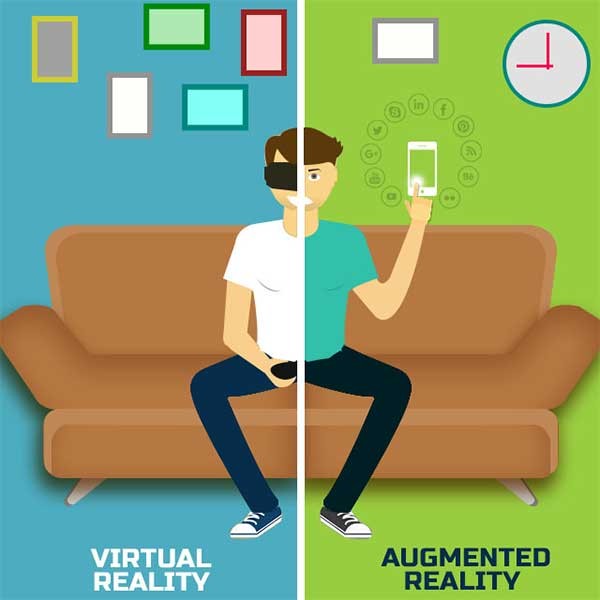Virtual and Augmented Reality
This topic examines the growing use of virtual and augmented reality technology in gaming, entertainment, and other industries, and the potential applications for these technologies in the future.
Virtual and augmented reality (VR/AR) technologies have been around for a while, but their popularity has grown significantly in recent years. The trend of VR/AR has affected many industries, from gaming and entertainment to healthcare and education.

This article will explore the rise of VR/AR, its current applications, and its potential impact in the future.
Virtual reality is a technology that allows users to enter and experience a computer-generated environment that simulates a real-world experience.
Wearing a VR headset creates this experience, displaying 360-degree video and enabling users to move around and interact with the virtual environment through motion tracking.
Augmented reality, on the other hand, adds digital elements to the real world. This technology overlays computer-generated images or information onto a live video feed from a camera, enhancing the user’s perception of reality.
The gaming industry has been a significant driver of the growth of Virtual and Augmented Reality. With VR headsets such as the Oculus Rift, HTC Vive, and PlayStation VR, gamers can fully immerse themselves in virtual worlds and have a more immersive gaming experience.
Many popular games, such as Beat Saber, Job Simulator, and Half-Life: Alyx, have VR versions, or developers have specifically developed them for VR.
However, the applications of VR/AR go beyond gaming. Healthcare professionals are using VR/AR to treat phobias, PTSD, and other mental health issues.
VR exposure therapy is a technique that immerses patients in simulations of triggering situations. Allowing them to confront their fears in a safe and controlled environment. Additionally, surgeons are using AR to access additional information during operations and improve surgical precision.
Education is another industry that has seen the potential of VR/AR. Schools and universities are using this technology to create immersive learning experiences. Taking students on virtual field trips, and allowing them to explore complex concepts more engagingly.
VR/AR can also provide hands-on training in fields such as engineering. Where students can practice their skills in a virtual environment.
The entertainment industry is also taking advantage of VR/AR technology. Concerts and events can now be streamed live in VR. Allowing users to experience the event as if they were physically present.
AR technology is being used in theme parks and museums to enhance visitors’ experiences and provide additional information about exhibits.
One of the most significant impacts of VR/AR is the potential for remote collaboration and communication. With VR/AR, people can work together in a shared virtual environment, no matter where they are in the world.
This technology is especially valuable in fields like engineering, architecture, and design, where teams collaborate on intricate projects.
The rise of VR/AR has not been without challenges. One of the biggest hurdles is the cost of the technology. High-quality VR/AR headsets can be expensive, and many people may not be able to afford them.
Additionally, there is still a lack of content and applications available, particularly for AR. As technology becomes more accessible and developers create more content, these challenges are likely to diminish.
Another concern is the potential for VR/AR to create an even greater disconnect between people and reality. As users become more immersed in virtual environments. There is a risk that they may begin to prioritize their virtual experiences over their real-life interactions.
This is particularly concerning for young people, who may struggle to differentiate between virtual and real-life experiences.
Conclusion
The trend of VR/AR is rapidly growing, and it has the potential to revolutionize many industries.
From gaming and entertainment to healthcare and education, VR/AR is being used to create immersive experiences that were previously impossible. As the technology becomes more accessible and more developers create content for it, the possibilities for VR/AR are endless. 온라인카지노사이트